Lukáš Krasula
Estimating the Resize Parameter in End-to-end Learned Image Compression
Apr 26, 2022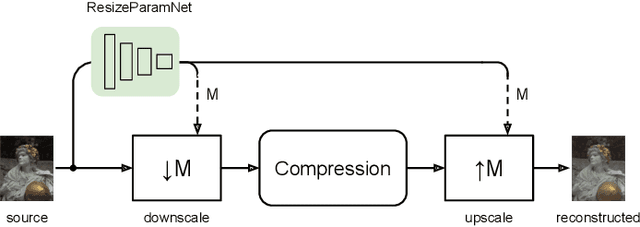
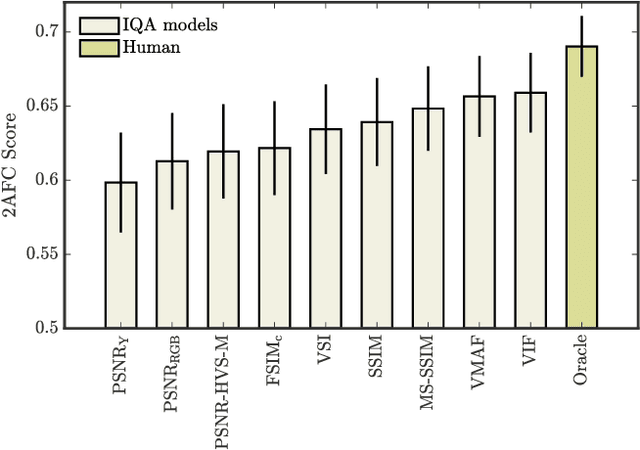
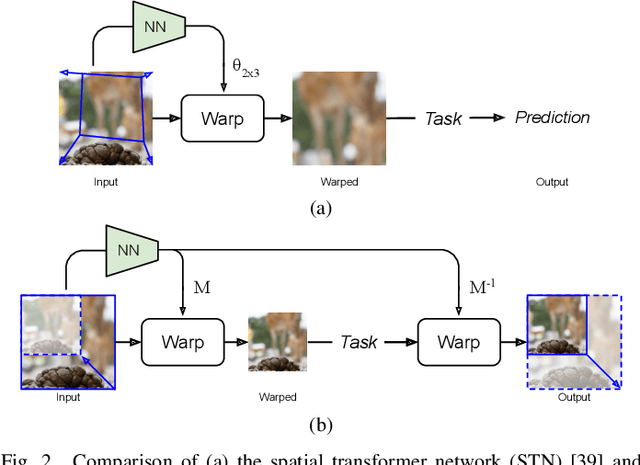
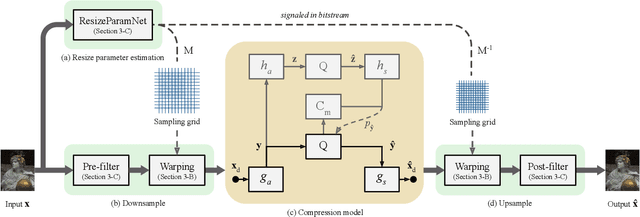
Abstract:We describe a search-free resizing framework that can further improve the rate-distortion tradeoff of recent learned image compression models. Our approach is simple: compose a pair of differentiable downsampling/upsampling layers that sandwich a neural compression model. To determine resize factors for different inputs, we utilize another neural network jointly trained with the compression model, with the end goal of minimizing the rate-distortion objective. Our results suggest that "compression friendly" downsampled representations can be quickly determined during encoding by using an auxiliary network and differentiable image warping. By conducting extensive experimental tests on existing deep image compression models, we show results that our new resizing parameter estimation framework can provide Bj{\o}ntegaard-Delta rate (BD-rate) improvement of about 10% against leading perceptual quality engines. We also carried out a subjective quality study, the results of which show that our new approach yields favorable compressed images. To facilitate reproducible research in this direction, the implementation used in this paper is being made freely available online at: https://github.com/treammm/ResizeCompression.
Improving Maximum Likelihood Difference Scaling method to measure inter content scale
Feb 25, 2022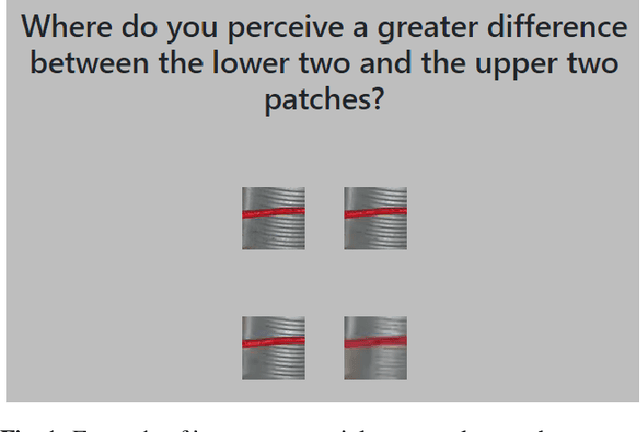
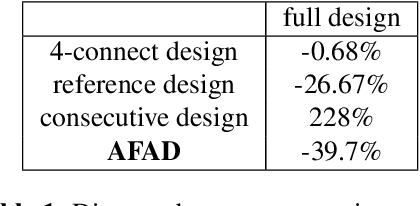
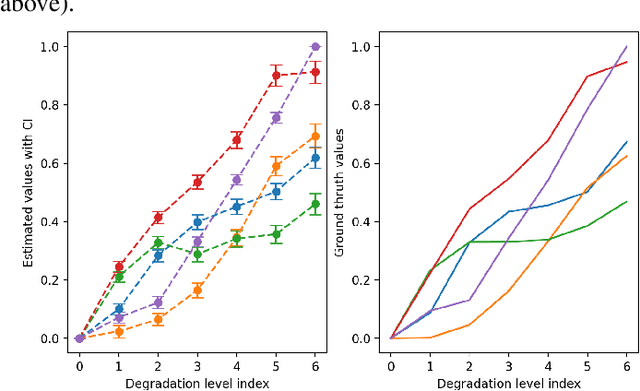
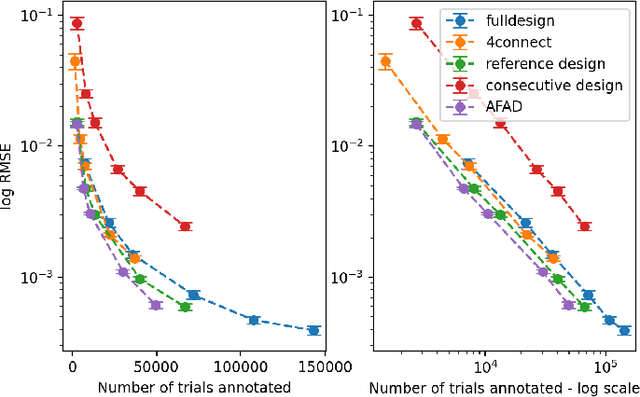
Abstract:The goal of most subjective studies is to place a set of stimuli on a perceptual scale. This is mostly done directly by rating, e.g. using single or double stimulus methodologies, or indirectly by ranking or pairwise comparison. All these methods estimate the perceptual magnitudes of the stimuli on a scale. However, procedures such as Maximum Likelihood Difference Scaling (MLDS) have shown that considering perceptual distances can bring benefits in terms of discriminatory power, observers' cognitive load, and the number of trials required. One of the disadvantages of the MLDS method is that the perceptual scales obtained for stimuli created from different source content are generally not comparable. In this paper, we propose an extension of the MLDS method that ensures inter-content comparability of the results and shows its usefulness especially in the presence of observer errors.
Banding vs. Quality: Perceptual Impact and Objective Assessment
Feb 22, 2022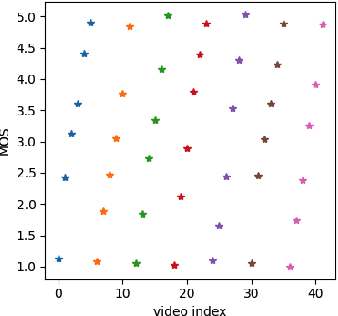
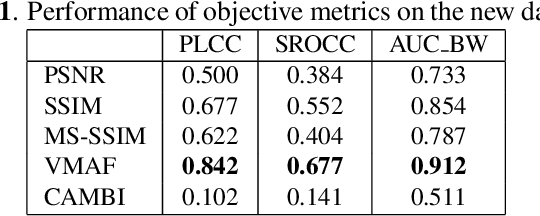
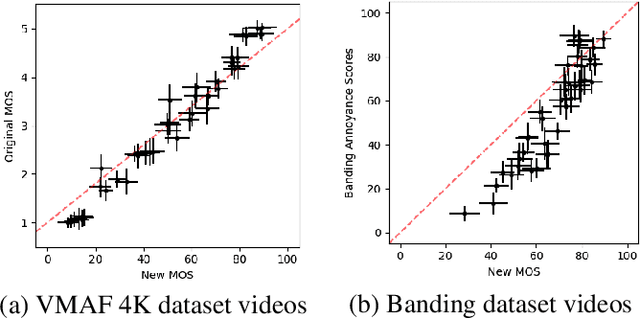

Abstract:Staircase-like contours introduced to a video by quantization in flat areas, commonly known as banding, have been a long-standing problem in both video processing and quality assessment communities. The fact that even a relatively small change of the original pixel values can result in a strong impact on perceived quality makes banding especially difficult to be detected by objective quality metrics. In this paper, we study how banding annoyance compares to more commonly studied scaling and compression artifacts with respect to the overall perceptual quality. We further propose a simple combination of VMAF and the recently developed banding index, CAMBI, into a banding-aware video quality metric showing improved correlation with overall perceived quality.
CAMBI: Contrast-aware Multiscale Banding Index
Jan 29, 2021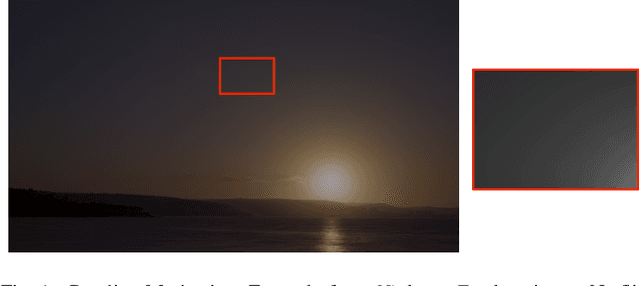
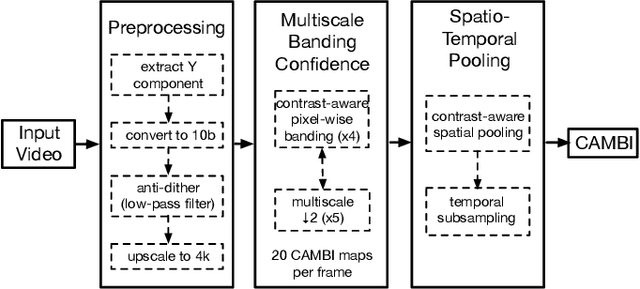
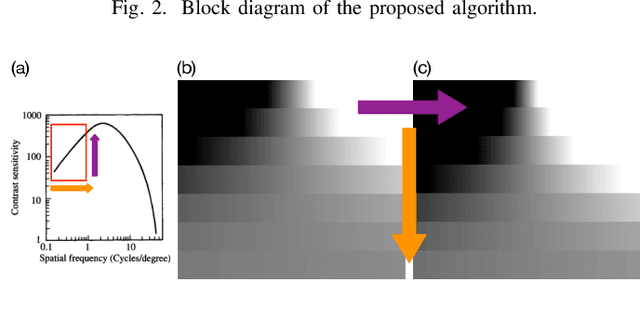
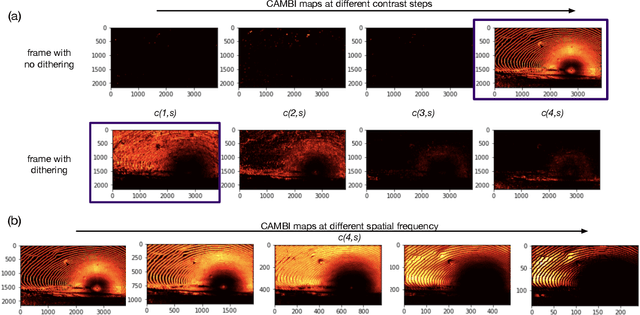
Abstract:Banding artifacts are artificially-introduced contours arising from the quantization of a smooth region in a video. Despite the advent of recent higher quality video systems with more efficient codecs, these artifacts remain conspicuous, especially on larger displays. In this work, a comprehensive subjective study is performed to understand the dependence of the banding visibility on encoding parameters and dithering. We subsequently develop a simple and intuitive no-reference banding index called CAMBI (Contrast-aware Multiscale Banding Index) which uses insights from Contrast Sensitivity Function in the Human Visual System to predict banding visibility. CAMBI correlates well with subjective perception of banding while using only a few visually-motivated hyperparameters.
Ambiguity of Objective Image Quality Metrics: A New Methodology for Performance Evaluation
Jan 19, 2021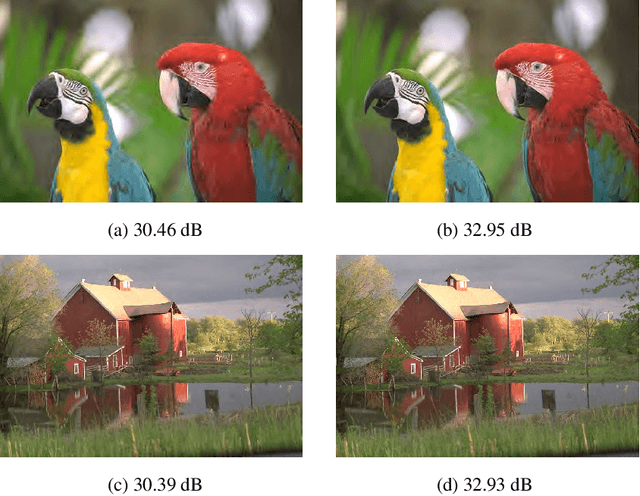

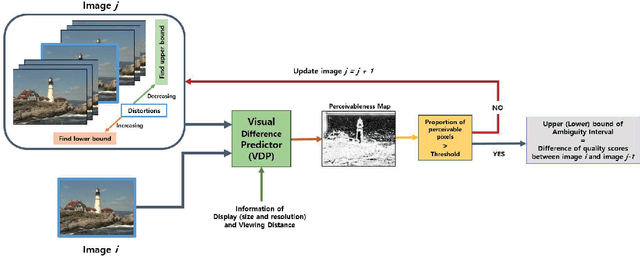
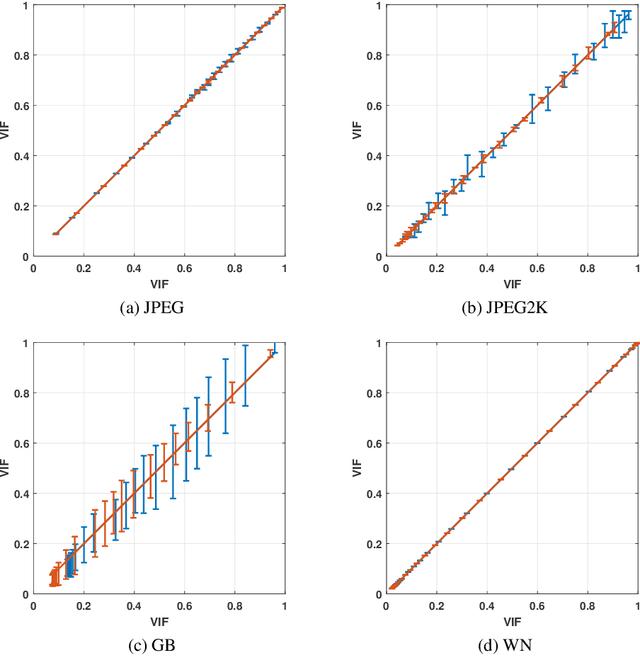
Abstract:Objective image quality metrics try to estimate the perceptual quality of the given image by considering the characteristics of the human visual system. However, it is possible that the metrics produce different quality scores even for two images that are perceptually indistinguishable by human viewers, which have not been considered in the existing studies related to objective quality assessment. In this paper, we address the issue of ambiguity of objective image quality assessment. We propose an approach to obtain an ambiguity interval of an objective metric, within which the quality score difference is not perceptually significant. In particular, we use the visual difference predictor, which can consider viewing conditions that are important for visual quality perception. In order to demonstrate the usefulness of the proposed approach, we conduct experiments with 33 state-of-the-art image quality metrics in the viewpoint of their accuracy and ambiguity for three image quality databases. The results show that the ambiguity intervals can be applied as an additional figure of merit when conventional performance measurement does not determine superiority between the metrics. The effect of the viewing distance on the ambiguity interval is also shown.
Strategy for Boosting Pair Comparison and Improving Quality Assessment Accuracy
Oct 01, 2020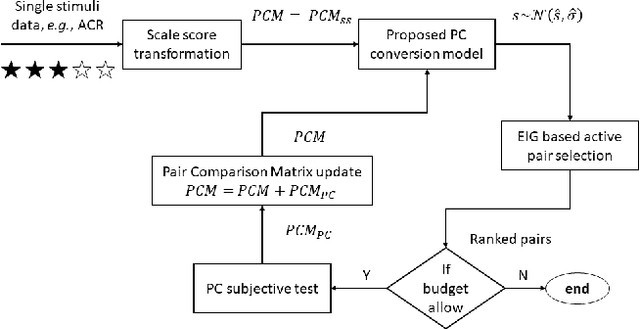
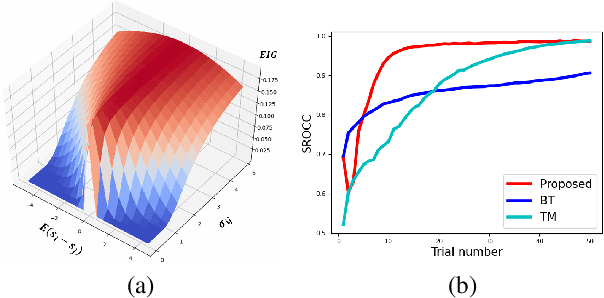
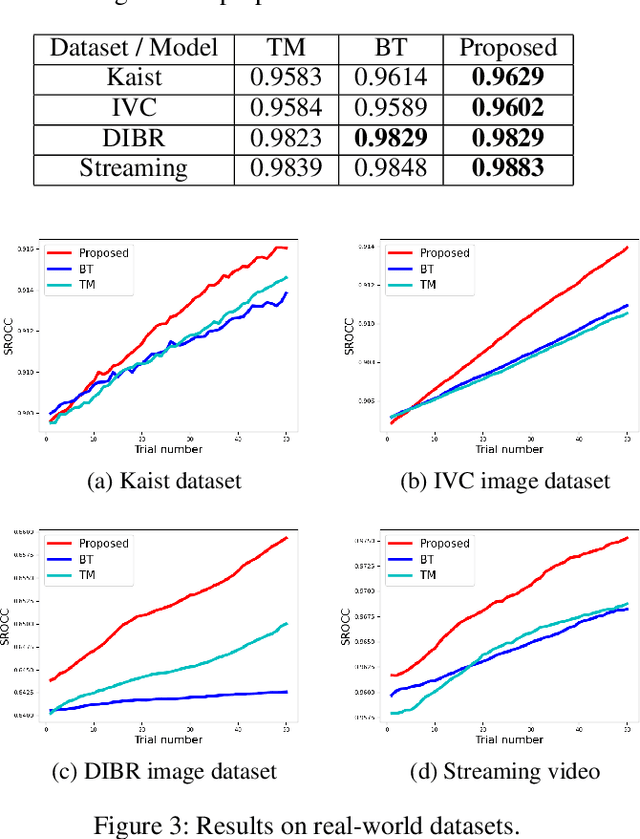
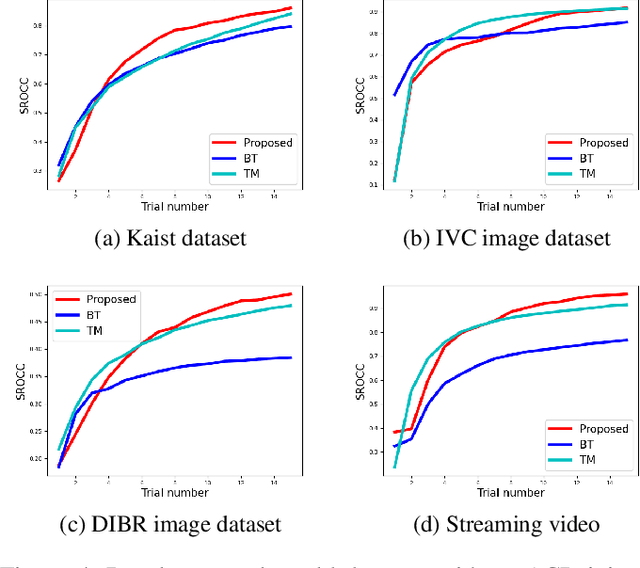
Abstract:The development of rigorous quality assessment model relies on the collection of reliable subjective data, where the perceived quality of visual multimedia is rated by the human observers. Different subjective assessment protocols can be used according to the objectives, which determine the discriminability and accuracy of the subjective data. Single stimulus methodology, e.g., the Absolute Category Rating (ACR) has been widely adopted due to its simplicity and efficiency. However, Pair Comparison (PC) is of significant advantage over ACR in terms of discriminability. In addition, PC avoids the influence of observers' bias regarding their understanding of the quality scale. Nevertheless, full pair comparison is much more time-consuming. In this study, we therefore 1) employ a generic model to bridge the pair comparison data and ACR data, where the variance term could be recovered and the obtained information is more complete; 2) propose a fusion strategy to boost pair comparisons by utilizing the ACR results as initialization information; 3) develop a novel active batch sampling strategy based on Minimum Spanning Tree (MST) for PC. In such a way, the proposed methodology could achieve the same accuracy of pair comparison but with the compelxity as low as ACR. Extensive experimental results demonstrate the efficiency and accuracy of the proposed approach, which outperforms the state of the art approaches.
 Add to Chrome
Add to Chrome Add to Firefox
Add to Firefox Add to Edge
Add to Edge